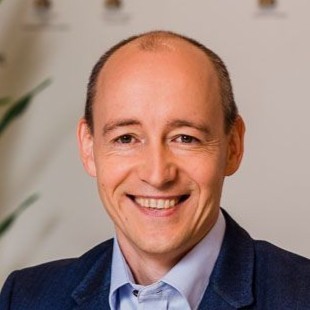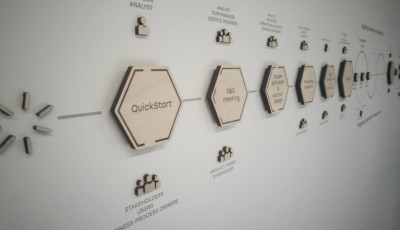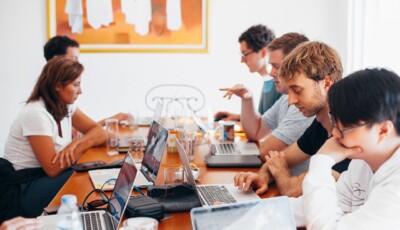The secret ingredient of Helmes’ business model is the ability to program and create world-class software development teams and manage them extremely effectively.
Many people think that Helmes is a technology company and we deal with programming. Actually, our business acumen lies mainly in building and managing world-class software development teams. Our teams provide the service of creating business-critical software solutions worldwide is the outcome. Helmes’ real expertise lies in how it creates these teams and makes them work together so that their efficiency exceeds the international average in the field, sometimes even two or three times.
Meelis Lang, Helmes Group Chief Innovation Officer
Helmes is not a technology business; it’s a people business – a business of bold, caring, and smart people. Everything we do is very closely related to decisions concerning people. We see ourselves as a professional home for IT talent. This means that we want to be a company where talented people can develop themselves professionally faster than anywhere else. That’s also our starting point in selecting people – especially managers, who have to grow their own business units.
In our 30 years of work, we’ve grown into a company with more than 1,000 employees and an annual turnover in excess of €50 million. This growth has come organically as well as from mergers and acquisitions. Compared to a person’s lifecycle, our current age of 30 years is the sweetest time. We’ve learned some painful lessons, and we have some achievements under our belt, but the majority of growth, development, and joy is still ahead of us.
A company’s growth is determined by three main factors:
- ambition,
- people,
- and money.
Speaking of ambition – there is a clear difference between the sound of a group of enthusiastic village musicians who play for fun and the performance of a world-class symphony orchestra.
How do you become a global trendsetter?
Our ambition is to turn Helmes and our working methods into the global gold standard of business-critical software services. We want to provide and already are providing software development services at a quality level comparable to the experience of listening to a world-class orchestra, not the performance of a good local band.
At first glance, this isn’t easy to believe and prove. The software development service is indeed challenging to measure. We’ve also asked several professional service experts how software services are measured globally. Not the work of one programmer or another, but the complete service and its efficiency – the ROI, as they say in business language. The answer is that there is no such generally known and recognized system. However, what people can measure is the cost of a programmer.
This is why growing a business of professional services has some unique features. If we want to grow our business and merge various companies with ourselves, we must understand that different types of businesses exist in our field. And their growth mechanisms are different.
Let’s start with the fact that any professional services business is divided into three parts:
- the business of procedure,
- the business of experience,
- and the research and development business.
In our field, the leading players in the business of procedure are very large companies from countries with big populations. They have hundreds of thousands of programmers who serve a specific purpose. Some do it very well, while others struggle. This service type has the lowest added value in the software development business.
In companies operating in experience-based businesses, the people who provide IT services have experience working together and in the specific technology and business area for which they develop information systems. The difference in the levels of value is already significant, as is the difference between the skill of working together and the efficiency of teamwork. As we know, software development projects don’t fail because of technology but because of inefficient cooperation between people.
The third type and the premier league is the R&D business. A good example of a business of this type is the global management consulting company McKinsey & Co, which boasts a team of very smart and experienced people. It focuses on expert consultations and strategic consulting.
Where do you position your business model?
Helmes has put its flag between R&D and the experience business. The selection and training of all of our people and the selection of our partners is focused on supporting our business model. We’ve scientifically defined the Helmes Way for ourselves, i.e., we’ve made our business an applied science. In order to ensure service quality, we’ve dismantled and defined the entire Helmes business model and our internal organisation of work as the Helmes team model. We’ve also developed a set of indicators to get feedback on our work internally as well as from customers.
The sum of these activities has allowed us to raise the full liability business model of Helmes even higher than the expert consultation model in terms of added business value. This is because, first of all, we help our customer define their business problem. Then, we can offer them solutions. Unlike expert consultation companies, we also help our customers implement the selected solution. And we don’t do this on a project basis, but from start to finish – as a complete cycle from the idea to the completion of the project, keeping it running and maintaining it. The ideal model of cooperation between a corporate customer and business cooperation, where we can be offer the biggest value, is a partnership with the customer represented by a businessperson who has an idea, a problem, or a need. Our orchestra has practiced to provide solutions to customers’ problems so that they can focus on their principal business. The rapid growth of recent years, the increasing number of orders from international customers and the expansion of the operating geography of our teams to new countries and new markets confirm that we’ve chosen the right path.
Helmes has proven that a service business managed from Estonia can be global and successful.
Get in touch




